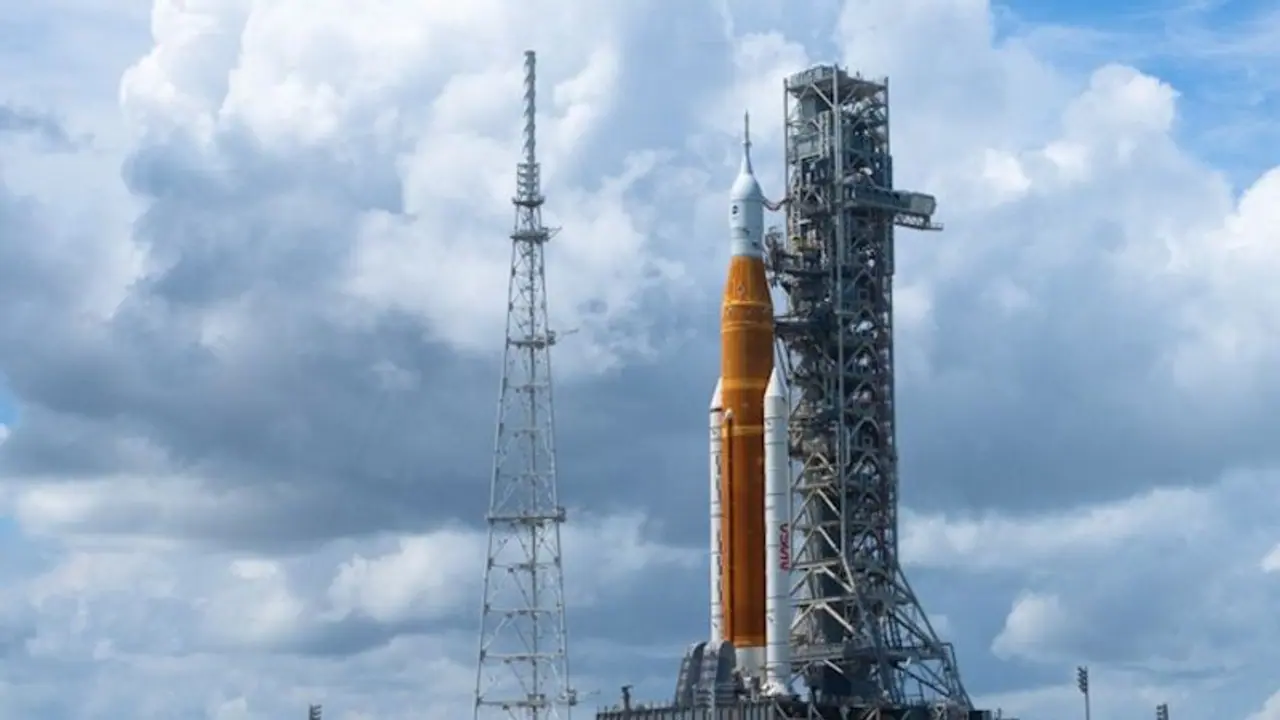The Orion spacecraft, atop the world's most powerful rocket, will launch from Florida's Kennedy Space Center, on its maiden voyage to the Moon and back. The decision was made following a meeting of mission managers on Tuesday to discuss the engine issues that surfaced on Monday.
Nasa will re-launch the Space Launch System (SLS) to the Moon on Saturday, just days after cancelling the launch minutes before the lift-off. On September 3, the spacecraft will launch at 2:17 pm EDT (IST 11:47 pm).

Atop the world's most powerful rocket, the Orion spacecraft will launch from Florida's Kennedy Space Center on its maiden voyage to the Moon and back. The decision was made after mission managers met on Tuesday to discuss the engine issues that surfaced on Monday.
According to Nasa, teams failed to cool down the four RS-25 engines to approximately -251 degrees Celsius during that launch attempt, with engine 3 showing higher temperatures than the others.
They also discovered a hydrogen leak on the purge can, a component of the tail service mast umbilical quick disconnect, and managed the leak by manually adjusting propellant flow rates.
While it was initially scheduled to launch on Friday, the new date allows engineers more time to test and resolve any remaining issues. As per NASA, the team would modify and practise propellant loading procedures to replicate the successful Green Run at NASA's Stennis Space Center in Mississippi.
NASA, in its blog, said, "The updated procedures would perform the engines' chill down test, also known as the kick start bleed test, approximately 30 to 45 minutes earlier in the countdown during the liquid hydrogen fast fill liquid phase for the core stage."
Meanwhile, engineers are configuring launchpad 39B to allow them access to the purge can on the tail service mast umbilical. Once access is granted, technicians will conduct assessments and torque connection points as needed.
While rain is expected on launch day, the mission management team will meet again on Thursday to review data and overall readiness.
The 322-foot (98-meter) rocket, NASA's most powerful ever built, remains on its pad at Kennedy Space Center, topped by an empty crew capsule. The Space Launch System rocket will attempt to orbit the Moon and return the capsule. Only three test dummies will be aboard. If successful, it will be the first lunar capsule launched since NASA's Apollo programme 50 years ago.
The $4.1 billion test flight, which is already years behind schedule, is the first shot in NASA's Artemis moon-exploration programme, named after Apollo's twin sister in Greek mythology. Astronauts could strap in as early as 2024 for a lap around the Moon, with a lunar landing attempt in 2025.
Also Read: Artemis 1 launch: Everything you need to know about NASA's mega-moon mission
Also Read: NASA's Moon mission starts on August 29: Here's all you need to know
Also Read: SHOCKING video: Did this pilot grab glimpse of UFOs? Are aliens and UFOs real? WATCH HERE
